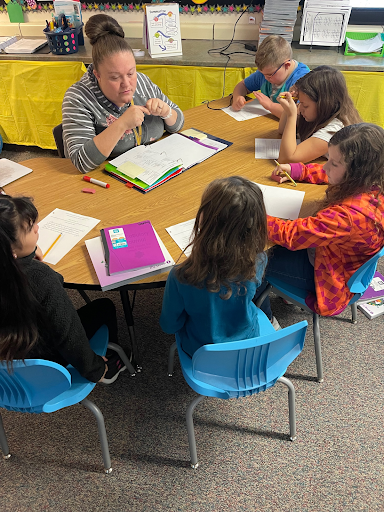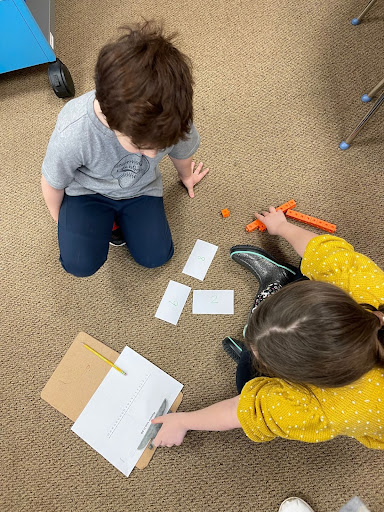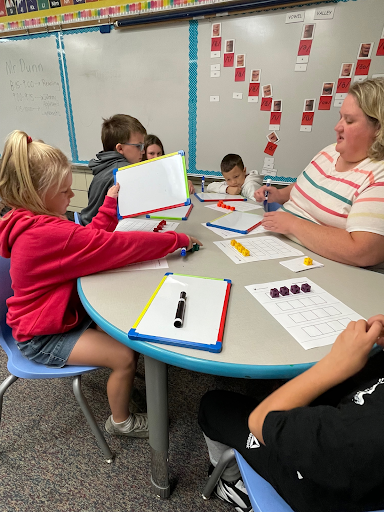Instructional coaching is all about forming a partnership in developing student learning. When student proficiency and growth are at the center of the decision-making process, wonderful collaboration can occur to move the needle for student understanding of skills and concepts. In this article, there are 10 practical tips coaches and teachers can consider to begin and sustain coaching cycles within a school district.
“When student proficiency and growth are at the center of the decision-making process, wonderful collaboration can occur to move the needle for student understanding of skills and concepts”
- Building a Culture for Coaching Cycles
Being new to a district and also joining a district that had not previously had coaches or coaching cycles was challenging at first. This is because educators in multiple roles do not always understand the role of an instructional coach. Instructional coaches are available to support the student-centered goals of teachers and provide an open space for making mistakes in the pursuit of increased student engagement and learning. One way to begin coaching cycles is to offer continued support after a professional development session. This provides job-embedded support. Another way to get things started is to advertise cycles as a way to get personalized professional development. As the first few cycles begin, word gets around quickly and more educators become interested in starting the process. To continue building that culture, it is important to work with educators from all experience levels. - Observe before the Coaching Cycle Begins
One mistake I made early in coaching is not taking the time to observe before working in a classroom. This didn’t allow me to understand the culture of the classroom or an opportunity to begin building relationships with the students I would be working with. Observing in advance will give the instructional coach time to acclimate to the classroom, determine possible coaching moves, and gain background knowledge on already established procedures within the classroom. Taking just one day to observe can really set the stage for a successful coaching relationship and cycle. - Create Expectations and Frameworks
To create norms with a teacher throughout the process, we work together on creating expectations and frameworks. I meet with teachers in advance of the observation and share a draft version of expectations and the framework. I welcome thoughts on ways to make adjustments that will work for both of us. This time is important to ensure both of us understand our role during the coaching cycle. We also discuss how we will notify each other if we feel like there are expectations that are not being met throughout the process. I share a Personalized Professional Development Roles and Responsibilities Draft to get ideas flowing for our roles during our time together but am very open to adjustments. I also share the learning curve associated with the first week of a cycle because I don’t know the students or procedures as well as the classroom teacher. I typically share that by week two there is a great flow between the coach, teacher, and students. - Set Goals and Gather Information
In the same meeting where responsibilities are established, I also work with the teacher to create student-centered goals while also gathering any information I can in advance of the cycle beginning. To gather information and set goals, I use a Pre-Coaching Checklist. The linked example is specific to when I work with a teacher in the reading block, but have other forms for different areas of coaching. This checklist helps me understand resources that are being used, where they are working within the curriculum map, individual student information (IEPs, BIPs, 504s, Allergies, etc.), small groups currently in place, and develop student-centeredSMART goals. This form helps the teacher and I understand the current reality and brainstorm how we want to partner to tackle improvement. - Be Available and Vulnerable
Making time for intentional debriefing is one of the most important parts of the coaching cycle. Before a cycle begins, I schedule meetings with the teacher several times throughout the time we work together. This allows for reflective questioning protocols to take place throughout the course of the cycle. I also share with teachers that I welcome questions at any point before, during, and after our time together. Sometimes there are questions that I don’t have the answers to, and I show vulnerability in that. Oftentimes students show us answers to our questions in how they respond to decisions made at the instructional level, so I often work with teachers to try, fail, and adjust when answers to questions are unknown. - Be Open to Feedback, Criticism, and Reciprocal Coaching
Seeking feedback and concerns from the teacher is key to growing together as a team for student success. Being open to feedback is important to ensure the change that takes place during a cycle continues after it ends. When healthy criticism is addressed and worked through everyone wins and sustainability after the cycle becomes more likely. - Look for Ways to Support after the Cycle
One of the biggest concerns I have during a cycle is the sustainability of the work after I leave. Because of this, I work diligently to find ways that I can support after a cycle is complete. To do this, I follow-up with teachers regularly after a cycle is complete. This helps me understand if any struggles are coming up that I can help address or support. With some teachers, I support them with creating materials for some time after a cycle, and with others, I create weekly checklists with templates linked to ensure all of the pieces we have worked on are in one easy-to-see place to be replicated. - Keep Evaluation out of Coaching
Coaching cycles must feel like a safe place to try new things and take risks. To create this culture, evaluation has to stay out of it. When working with teachers in cycles, I make an agreement with their evaluators. I meet with evaluators and ask that they do not record any evaluations for the complete duration of the coaching cycle. All evaluators who I have this conversation with agree and support this. I welcome evaluators to still visit and see the transformation taking place or to evaluate me, but no evaluation of the teacher can take place. This allows for the teacher and coach to celebrate failures as a means to get somewhere better and allows for honest reflection to take place. - Build Capacity in Leadership with Coaching
Throughout the cycle, my hope is that teachers feel more comfortable and confident in their craft. Because the confidence builds, I encourage teachers to share their learning in professional development sessions, a weekly newsletter I send out, or with times for other teachers inside and outside of the district to visit their classrooms to observe students and instructional practices. This builds individual teacher capacity in leadership while also encouraging others to participate in coaching cycles in the future. - Share Classroom Stories During the Cycle
Coaching cycles are an opportunity to shine a light on the incredible work teachers do every day. To spotlight this, I like to take action shots of them and their students to share with the community. In doing this I am able to celebrate student learning, build confidence in the work of teachers, and promote the impact that a coaching cycle can have on student engagement and learning. This builds positivity around the overall coaching culture within the district.
This is by no means an exhaustive list of tips for coaching cycles, but a few that I have learned over the years while working at MSD of Steuben County in Angola, IN. All roles within education can benefit from being coached to have the greatest impact on the lives of the students that we serve. As I work with teachers and other coaches, I am constantly reflecting on practice and being coached myself.



Resources
Please login or register to claim PGPs.
Alternatively, you may use the PGP Request Form if you prefer to not register an account.


